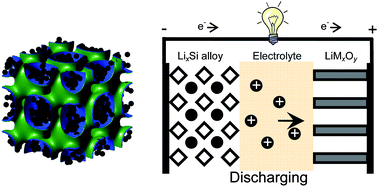Nanostructured silicon is promising for high capacity anodes in lithium batteries. The specific capacity of silicon is an order of magnitude higher than that of conventional graphite anodes, but the large volume change of silicon during lithiation and delithiation and the resulting poor cyclability has prevented its commercial application. This challenge could potentially be overcome by silicon nanostructures that can provide facile strain relaxation to prevent electrode pulverization, maintain effective electrical contact, and have the additional benefits of short lithium diffusion distances and enhanced mass transport. In this review, we present an overview of rechargeable lithium batteries and the challenges and opportunities for silicon anodes, then survey the performance of various morphologies of nanostructured silicon (thin film, nanowires/nanotubes, nanoparticles, and mesoporous materials) and their nanocomposites. Other factors that affect the performance of nanostructured silicon anodes, including solvent composition, additives, binders, and substrates, are also examined. Finally, we summarize the key lessons from the successes so far and offer perspectives and future challenges to enable the applications of silicon nanoanodes in practical lithium batteries at large scale.

You have access to this article
 Please wait while we load your content...
Something went wrong. Try again?
Please wait while we load your content...
Something went wrong. Try again?


 Please wait while we load your content...
Please wait while we load your content...